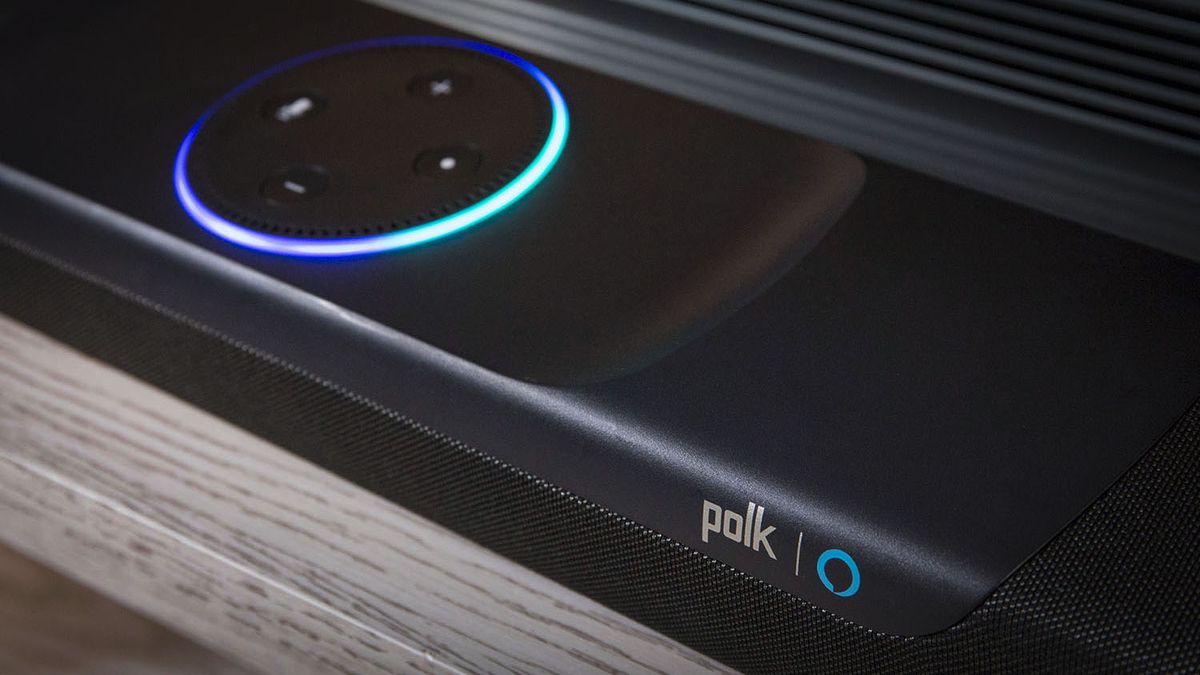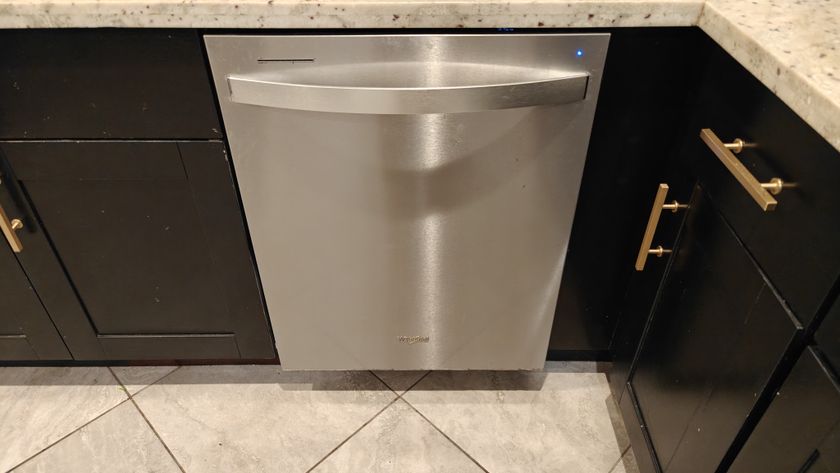The best soundbars can turn a fun TV viewing into a cinematic, immersive experience. Crucially, it can do that without setting up many speakers while keeping the decor to a minimal finish.
Soundbars balance a room-filling home cinema setup – which takes time, effort, money, space, and cabling – and the too-tinny sound of built-in TV speakers. Some soundbars are now so advanced they can create a better and more immersive audio experience than a full surround sound speaker setup.
Soundbars, by design, generally look excellent. They have a minimal finish that can enhance the look of your room when placed under the TV. Many come with subwoofers, which add booming bass, but they feature a long enough cable to be easily hidden away in a cabinet.
Look out for features like Dolby Atmos support, which can mean up-firing speakers that bounce sound off the ceiling—so when it's raining in the movie, it feels like it's coming from above you.
Thanks to a wide selection of options, the range of features, quality, and end audio results vary. Here, we lay out only the best soundbar options, with each feature stated up front so you can quickly and easily find what you're looking for.
If you've already checked out our best game consoles and invested in one, a soundbar is a perfect addition to improve that.
The best soundbars we recommend
Top Ten Reviews is on a mission to review everything we feature in our buyer's guides. Still, while we work hard to make this a reality—or where this isn't possible—some of our guides still feature rankings based on our team's considerable expertise and research.
While we haven't been able to test any of the units in this guide in person, we've instead honed in on top-rated brands and used our knowledge of the best features to help you make the right decision for your home, all for the best price.
The best soundbar overall
Why you can trust Top Ten Reviews Our expert reviewers spend hours testing and comparing products and services so you can choose the best for you. Find out more about how we test.
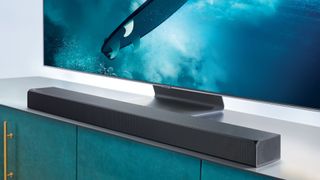
The Samsung HW-Q90R tops our list of the best soundbars because its audio quality is simply unmatched—yes, it’s pricey. Still, this soundbar brings brilliant audio fidelity to your home cinema setup.
With Dolby Atmos and DTS:X, this soundbar comes with rear and upward-firing speakers to produce a truly immersive sound that works just as well for music streaming as it does for movies.
In terms of connectivity, you get two HDMI inputs, one HDMI output with eARC, an optical digital audio input, and USB, as well as options for WiFi and Bluetooth, so you can easily play music from your smartphone or tablet through the soundbar.
Have an Amazon Echo speaker at home? The Q90R works with Alexa, so you can use your voice to control it via your smart speaker. Note that this isn’t built-in integration, so you can’t control your smart home devices with the soundbar alone.
The Samsung HW-Q90R is expensive, and it’s worth considering that cheaper soundbars are out there; however, as it has been out for a few months now, you might find that some retailers are selling it at a reduced price.
The best quality soundbar on a budget
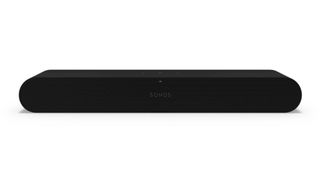
The Sonos Ray is one of the smaller and more affordable soundbars out there, but since it comes from such a premium brand, you can expect an audio performance that punches well above its weight. This 22-inch speaker offers superb vocal clarity—something many people buy a soundbar for specifically—making listening to dialogue much easier.
This speaker also offers a very clear high end and manages to project in a punchy way, offering enough impact and power to enhance even the louder end of the movie spectrum. Pair this with other Sonos speakers to create a full 5.1 surround sound system.
This also fits into the Sonos multiroom setup, meaning it can be used as a music speaker to stream using Apple AirPlay 2, Spotify, Tidal, and plenty more. Physical connectivity is minimal with a single optical port—something nearly all TVs will have but not all consoles or monitors. It's worth keeping in mind.
This was designed to fit into a compact space, even a cabinet, without changing the sonic effect. As such, it can be kept out of the way and still offer an audio result that outperforms most televisions, especially when it comes to reproducing those speaking on-screen.
So, while this might not deliver some of the audio prowess of the more premium soundbars, it punches far above its literal weight and price, earning it a well-deserved place high on this list.
The best value soundbar
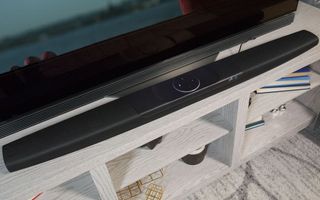
Don’t want to spend upwards of $1,000? The Polk Audio Command Bar is a great choice, with many connectivity options and an easy setup process – all for less than $250.
This super-smart soundbar has Alexa built into it directly, which means you can ask it questions, get it to read you the news, control your smart home gadgets, and much more—pretty much anything an Amazon Echo can do.
Furthering its integration into the Amazon ecosystem, the Polk Audio Command Bar is designed to work with Amazon Fire TV devices. It has a dedicated HDMI input for your TV streaming device to slot into. Other inputs include one SPDIDF, one TOSLINK optical input, and a micro-USB port.
In addition to voice control, the Command Bar has one of the best physical remotes we’ve tested. It has separate volume, subwoofer, and dialogue controls, so you can fine-tune the sound depending on what you’re listening to.
The dialogue is particularly good, although serious audiophiles may feel that the bass is somewhat lacking, you’ll struggle to find any serious issues with this clever soundbar at this price. Still, at this price, you’ll struggle to find any serious issues with this clever soundbar.
- Read our full Polk Audio Command Bar review
The best Dolby Atmos soundbar on a budget
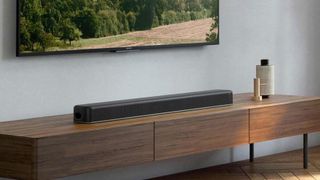
If you’re an audiophile on a budget, you need to check out the Sony HT-X8500 Soundbar; coming with Dolby Atmos and DTS:X virtual surround sound, as well as an integrated subwoofer to boost that bass, it’s also great value at just under $300.
The cost is particularly impressive when you consider that Dolby Atmos soundbars are usually double the price – and with a slick build, it looks more expensive than it really is.
It’s worth noting that, with no upward drivers, this HT-X8500 only creates an illusion of surround sound using Sony’s Vertical Sound Engine technology. If you’re looking for the real deal, you might have to spend a little more, but the immersive audio on offer here is impressive nonetheless.
The inclusion of an integrated subwoofer means that it could easily soundtrack your parties, as well as your movie nights; in terms of connectivity, it’s very flexible with one HDMI input, one HDMI output, an analog audio in/out, Ethernet, an optical audio input, Bluetooth, and WiFi.
The best soundbar for music
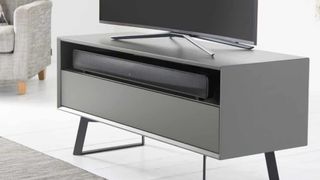
It’s not the prettiest soundbar we’ve seen, but it may be one of the best-sounding models out there, particularly if you’ll use your soundbar for music just as often as you will for movies and TV.
The Q Acoustics M4 sounds truly brilliant, with high-level audio fidelity that will allow you to hear details in your music that you haven’t noticed before. Its wide, open soundstage is bolstered by well-balanced bass frequencies that don’t overpower the mid-high notes.
Movies sound just as good, with clear dialogue and bone-shaking bass rumbles that add more excitement to those blockbuster explosions.
There’s no surround sound here; this is a purely stereo setup, so anyone looking for truly immersive audio will want to look for Dolby Atmos-enabled models. There’s no HDMI input either, so you’ll need to rely on the soundbar’s optical input to hook it up to your TV. Otherwise, you have Bluetooth connectivity 3.5mm audio inputs and analogue RCA inputs if you want to hook it up directly.
The best soundbar for smart homes

The Sonos Beam is one of the cutest soundbars we’ve tested. Its compact design makes it ideal for smaller homes and TVs.
Sonos is well known for its audio prowess, and the Beam is no exception; it has a stunningly accurate and detailed soundstage that will easily fill your living room. The Sonos app allows you to tune the soundbar to the dimensions of your room, so you should find that it sounds great no matter where you place it.
You don’t get a subwoofer included, so bass heads may want to buy the Sonos Sub to boost those lower frequencies. There’s also no Dolby Atmos for the surround sound experience, but at less than $400, that’s not a huge surprise.
One of the Sonos Beam's big selling points is that Alexa and Google Assistant come built-in; that means you can control your soundbar hands-free no matter which smart ecosystem you prefer.
The best cheap soundbar
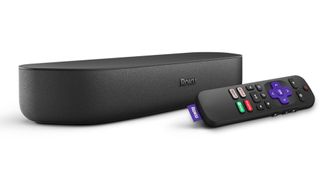
The Roku Streambar is a fantastic pick for anyone who wants to ensure their soundbar purchase doesn't damage their budget too badly. If you want to save that cash to get the best TV for picture quality – where the audio may be lacking – this is a superb pairing to help bring the sound quality up to that level, too. Plus, it's fantastic for streaming support.
Roku, famous as a streaming brand, has created a soundbar that integrates its various smart streaming features. That means this will enhance your audio experience and let you make any TV smart by using this system to take advantage of all the latest streaming apps in one place. It's also built to work at 4K, making it future-proof for a long time.
If your TV has a high-res HDMI input, you can stream 4K at 60 frames per second from this soundbar. But it's the audio that's worth mentioning at this price. Despite that low price and cramming in all the streaming smarts for your money, this does a good job of audio reproduction.
Crucially, this soundbar can offer a clear and powerful sound directed outwards and propelled across the room. This is what most soundbars are bought for, to enhance the otherwise muffled TV reproduction of audio – and in this regard, the Roku Soundbar does a very good job. It's not the most cinematic of audio experiences, but because of its compact size and affordable price, this does a very good job.
The best soundbar for small spaces
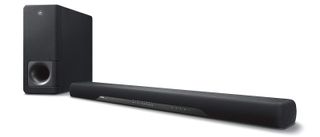
If you need to fit your new soundbar into a small space, the Yamaha YAS-207 is a fantastic option. Despite its compact frame, it packs six speakers in the sound bar and comes with a 6.25-inch wireless subwoofer.
In addition, the YAS-207 sports DTS Virtual:X, which provides immersive sound that is as tall as it is wide.
When we tested this soundbar, we were impressed by the clarity of the Clear Voice settings, which boost the dialogue in films and TV shows. When you combine clear dialogue and immersive surround sound with a price of less than $300, it is hard to justify using your TV’s built-in speakers.
While it doesn't come with creature comforts like built-in voice assistants or WiFi connectivity, it does have most of the connectivity options you need, including HDMI ports, a 3.5mm auxiliary input, and Bluetooth.
The HDMI connections support 4K and HDR video pass-through, so the YAS-207 doesn’t degrade the video quality of content you play through your stream box or UHD Blu-ray player if you connect them directly.
There's also Bluetooth for wireless streaming from your smartphone, tablet, or laptop, so you can use it for music, radio, podcasts, and TV.
- Read our full Yamaha YAS-207 review
The best mid-range Dolby Atmos soundbar
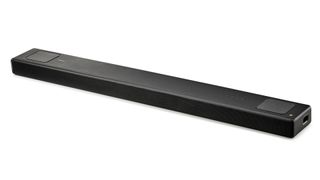
The Sony HT-A5000 is a very powerful and well-rounded soundbar from one of the best manufacturers. Yet this model manages to keep the price in the mid-range. Despite that relative affordability, this soundbar offers powerful audio that remains well-balanced with an artful delivery, even at the higher volume end of sound output.
As a pass-thru, this is super future-proofed, with support for 4K at 120 frames per second and even 8K. Plus, you have Dolby Atmos, Dolby AudioTM, DTS:X, DTS-HD, and PCM as supported audio formats. That's without even mentioning the fact that this has WiFi, Bluetooth, and eARC onboard. This is one seriously well-connected and super supportive soundbar that can do pretty much anything you could want of it.
While the audio delivery is fantastic, with booming and immersive cinematic bass, crisp and clear vocal dialogue, plus punchy and rhythmic music playback, it does lack some EQ controls. That said, do you need EQ controls when everything works automatically anyway? Perhaps not, but it is worth mentioning for those who are looking for that feature.
While this is a mid-range product for Sony, there are some similarly priced flagship soundbars from other brands, making this a tough space to compete in. That said, if you want Sony quality without the top-end price, this is a very good alternative choice.
The best soundbar for virtual surround sound
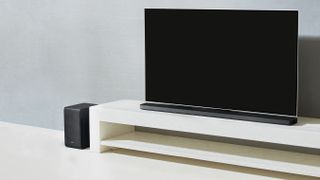
This 4.1-channel soundbar supports Dolby Atmos and 4K pass-through, making it a great option for future-proofing your home cinema setup.
Dolby Atmos virtual surround sound means that your films and TV shows should sound super immersive. If you stream your shows in Ultra HD, those 4K HDMI inputs/outputs will ensure that you don't lose any quality.
The LG SJ8 also has a built-in Google Chromecast, so you can send video and audio from any supported app at a higher quality than a Bluetooth connection.
Sound quality is generally very good, although the wireless subwoofer could be more powerful; still, it should boost the bass of your shows and songs enough to make an impact.
The LG SJ8 is available for less than $350, so it's a good mid-range model for anyone who wants tons of connectivity options and virtual surround sound without a huge price.
- Read our full LG SJ8 review
How to choose the best soundbar for your home
What is the best connection option for soundbars?
If your TV was manufactured after 2009, it likely has an HDMI ARC connection. The ARC portion of that protocol stands for Audio Return Channel, and it allows for two-way communication between the soundbar and TV with a single HDMI cable. Connecting your soundbar to your TV with an HDMI ARC connection lets you control the volume with your TV remote and automatically turns the sound bar on when the TV is on. You can also use the HDMI ARC connection to send sound from your TV to an AV receiver if you have a traditional surround sound setup.
What about wireless connectivity?
There are two wireless connection options available on soundbars. Some have Bluetooth, others have WiFi, and the best have both. We asked Robert Goedken, the general manager of Yamaha’s AV division, what the best way to wirelessly stream high-fidelity content is, and he responded, “WiFi offers greater range, better stability, and supports transmission of higher-resolution audio content. Most people already have WiFi in their homes, so it makes sense to use it to stream content to their soundbar.” We prefer sound bars with WiFi connectivity for high-fidelity audio and Bluetooth connectivity for ease of use.
If you want theater-quality audio, a subwoofer is an important component as it will deliver a much deeper bass response. Most of the soundbars we tested come with a wireless subwoofer, all connecting automatically, making them easy to set up. In addition, you may want to consider a soundbar with separate volume controls for the subwoofer if you live in an apartment or house with thin walls. You can turn the bass down to keep your neighbors happy.
What’s the difference between preset audio modes?
All the soundbars we tested have at least a couple of options for preset audio modes to maximize the EQ and, in some cases, volume settings for a specific type of content. We talked to John Crisco, Director of Engineering for Sound United, about the settings and how to best utilize them.
John told us the music mode preset is “the most natural audio preset.” Music mode doesn’t significantly boost or cut bass or treble frequencies, which makes it a good setting for most dialogue-based television shows. This setting is optimized for conventional two-channel stereo, the format for most music recordings. The music mode is the best audio preset option if you use your sound bar mostly for listening to music and watching TV.
The movie mode preset offers the most dynamic range of all the audio modes. This setting boosts bass response and dialogue volume and has the widest soundstage. Sound effects don’t get compressed, so explosions and other loud effects are startlingly loud and impactful, just as the sound engineers intended. To take full advantage of movie mode, connect the soundbar to your television through the HDMI ARC port instead of using the optical input (if it’s supported).
Night mode is our favorite sound bars' newest and most helpful audio mode, like the Polk Audio Command Bar and the Sonos Beam. Night mode is the perfect setting for watching movies and TV while asleep. The dialogue frequencies are boosted, but the dynamic range is reduced. Compression is more evident, so the loudest sounds, like sound effects, are less startling, and the quietest sounds, like whispering dialogue, get pushed to the forefront.
